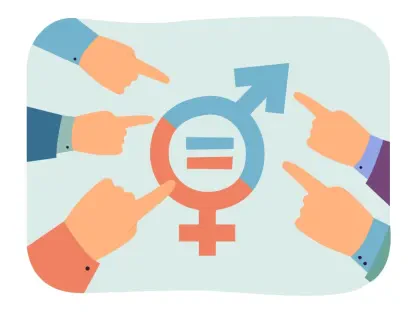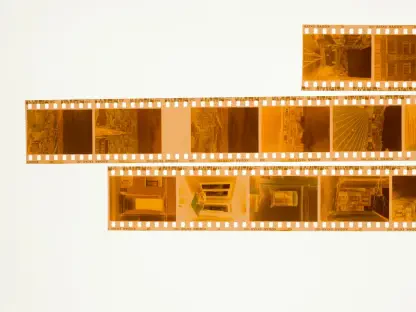In the demanding world of medical education, where the pressure to excel can often feel insurmountable, programs that foster collaboration and support stand out as vital lifelines for students navigating their challenging journey. At Campbell University’s Jerry M. Wallace School of Medicine (CUSOM), an initiative has emerged as a beacon of academic and personal growth for aspiring physicians. The Peer Learning Partner Program, housed within the Academic Center for Excellence (ACE), has once again demonstrated its profound impact on the student body. This year, the university celebrated the remarkable contributions of its 2024-25 cohort, shining a spotlight on individuals who have dedicated countless hours to helping their peers navigate the rigors of medical school. Their efforts, characterized by empathy and skill, not only bolster academic success but also build a sense of community that is essential in such a challenging field. This recognition underscores a broader commitment to nurturing future healthcare professionals through peer-led support.
Celebrating Student Dedication and Impact
Recognizing a Standout Contributor
At the heart of this year’s accolades is Dr. Elise Brewster, a third-year medical student from Apex, who earned the prestigious title of ACE Peer Learning Partner of the Year for 2024-25. With nearly 140 hours of service, Brewster’s commitment to her peers is nothing short of inspiring. Her work primarily focused on supporting first-year students as they grappled with the steep learning curve of medical school. Reflecting on her own early struggles, she emphasized the importance of approachable mentors who can provide guidance during those formative months. Brewster’s approach, marked by patience and understanding, created a safe space for students to ask questions and build confidence. Her efforts extended beyond traditional tutoring, as she played a key role in piloting new initiatives that addressed specific academic challenges, making a tangible difference in the learning experience of many.
Beyond her direct tutoring hours, Brewster’s influence was particularly evident in her innovative contributions to anatomy education. She spearheaded additional lab support sessions outside regular hours, a resource that quickly gained popularity among first-year Doctor of Osteopathy (DO) students. These sessions provided hands-on assistance, helping students prepare for practical exams with greater assurance. Her ability to break down complex anatomical concepts into manageable lessons not only alleviated stress but also fostered a deeper understanding of the subject. This initiative, driven by Brewster’s foresight, highlights how tailored support can transform a daunting aspect of medical training into an achievable milestone. Her dedication serves as a model for how peer learning can directly address and overcome specific academic hurdles.
Honoring a Collective Effort
The Peer Learning Partner Program’s success is not solely the work of one individual but a testament to the collective dedication of 31 students who contributed 732 hours of service this year. This group, comprising second-year Master of Science in Biomedical Sciences (MSBS) students, second-year medical students, and third-year medical students, provided a robust network of support through tutoring, drop-in sessions, and workshops. Under the guidance of Dr. Amy Hinkelman, the executive director of Academic Support and Assessment at CUSOM, the program maintains high standards through rigorous academic criteria and mandatory training. This ensures that every interaction is meaningful and impactful, directly contributing to the academic progress of those seeking assistance. The breadth of this effort illustrates the program’s extensive reach within the medical school community.
During the ACE Peer Learning Partner Appreciation Luncheon, several other students were also recognized for their exceptional contributions with Certificates of Service Recognition. Laura Petrera was named the MSBS Outstanding Peer Learning Partner, while second-year DO students Brianna Lockwood, Monica Mercurio, Greta Nebeker, and Isaac Nebeker, along with third-year DO student Cole Mueller, were similarly honored. Together, these Outstanding Peer Learning Partners accounted for over half of the total tutoring hours, underscoring their pivotal role in the program’s effectiveness. Their commitment to helping peers succeed academically while balancing their own rigorous studies exemplifies the spirit of collaboration that defines this initiative. Such recognition not only celebrates individual achievements but also reinforces the value of collective effort in fostering a supportive learning environment.
Exploring the Broader Benefits and Innovations
Mutual Growth Through Peer Interaction
One of the most compelling aspects of the Peer Learning Partner Program is the mutual benefit it offers to both tutors and those receiving support. Engaging in peer tutoring allows the partners to reinforce their own understanding of complex medical concepts, often deepening their knowledge in ways that classroom learning alone cannot achieve. Beyond academics, the experience hones critical interpersonal skills, such as effective communication and empathy, which are indispensable for future medical professionals who will interact with patients and families. The process of teaching also boosts the tutors’ confidence, as they witness firsthand the positive impact of their guidance. This dual advantage creates a cycle of growth where both parties emerge stronger and more prepared for the challenges ahead in their careers.
This reciprocal benefit was vividly illustrated through personal accounts from participants like Brewster, who found immense satisfaction in seeing students gain confidence through her support. The “learn it, do it, teach it” philosophy she embraced highlights how teaching solidifies learning, making it a powerful tool for retention and mastery. Additionally, the emotional rewards of tutoring—such as forming meaningful connections with peers—add a layer of fulfillment to the experience. This dynamic fosters a sense of camaraderie within the medical school, breaking down barriers and creating a community where students feel supported not just academically, but also personally. The program’s structure thus serves as a foundation for developing well-rounded professionals equipped for the demands of healthcare.
Adapting Support to Student Needs
Innovation is a hallmark of the Peer Learning Partner Program, as demonstrated by the introduction of anatomy lab drop-in sessions. These sessions, initiated by Brewster and fellow partners, were designed to address the overwhelming nature of anatomy studies for first-year students. By offering structured yet flexible support outside regular lab hours, the initiative provided a critical resource that was met with widespread appreciation. Students could engage in hands-on practice, ask targeted questions, and build confidence in a less formal setting, which proved instrumental during exam preparations. This adaptation reflects a broader trend of tailoring academic support to meet specific needs, ensuring that resources evolve in step with student challenges.
The success of such initiatives points to the program’s responsiveness and forward-thinking approach. By identifying gaps in traditional learning structures and addressing them through peer-led solutions, CUSOM creates an environment where students can thrive under pressure. These anatomy sessions are just one example of how the program continuously seeks to enhance the learning experience, setting a precedent for other academic support systems. The positive feedback from participants further validates the need for such targeted interventions, suggesting that similar innovations could be applied to other challenging areas of medical education. This adaptability ensures that the program remains a vital component of student success at the university.
Reflecting on a Legacy of Support
Looking back, the 2024-25 Peer Learning Partner Program at Campbell University’s School of Medicine left an indelible mark on the academic community through its unwavering commitment to student success. The dedication of individuals like Elise Brewster, alongside the collective efforts of all partners, cultivated a nurturing environment where medical students overcame challenges together. The recognition of outstanding contributors at the appreciation luncheon served as a fitting tribute to their hard work, while the mutual benefits of peer learning highlighted the program’s profound significance. Moving forward, the university can build on this foundation by expanding innovative offerings like the anatomy lab sessions and exploring new ways to address evolving student needs. Encouraging even broader participation and fostering similar initiatives across other disciplines could further amplify the impact of peer support, ensuring that future generations of medical professionals are equally empowered to succeed.









